At the Bottom of Maslow’s Pyramid
Food is not just sustenance—it's a cultural flex, a source of indulgence and solace, and, ultimately, an identity marker.
In Case of Doubt welcomes snraya, a Paris-based culture enthusiast and rookie researcher.
In 1943, psychologist Abraham Maslow presented a pyramidal, hierarchical representation of human needs in his article A Theory of Human Motivation. More commonly known as the Maslow pyramid, it crowns self-fulfilment at the top while rooting physiological needs—drinking, sleeping, breathing, and, of course, eating—at the base.
Food is part of our lives and therefore not immune to the socio-cultural changes we face. During the first lockdown of 2020, many people turned to food as a source of comfort and as a hobby. Companies like Flink and Getir hustled their way into this craving for comfort (with varying degrees of success), embedding themselves into the daily grind of consumers.
Four years later, the lockdowns have given way to inflation and recession: food prices—which include both groceries and restaurant purchases—rose by 28% since 2019, and in August 2024, they increased by 0.1% from the previous month (NerdWallet, 2024; Bureau of Labor Statistics, 2024). Yet, the cultural zeitgeist speaks. From TV hits such as The Bear, to chefluencers and new en-vogue speakeasies, food has solidified its place in the new cultural order—we’re eating it up, quite literally.
Food as an Identity Statement
Food has always been part of our identity construction, stitched into the very fabric of cities and nations. From the baguette’s crust in France to New York’s gooey pizza slice and the Philly cheesesteak, each dish steps beyond sustenance into myth. We now live in an economy that rewards taste, and even more when it is niche—the “taste economy,” as we call it. In an eponymous article from the Dirt newsletter, Daisy Alioto introduces taste as an asset of our modern economy, but also as a form of self-expression. Like fashion, food acts as an identity badge; in a world where your plate speaks volumes, food becomes a narrative, a manifesto. In an article tracking “the people working three jobs to afford Erewhon”, 23-year-old Spencer testifies: “I’ve made jokes about how no matter what, [food] will always be in my budget, even though I’m a starving artist. It’s become my identity.”
This phenomenon is inseparable from the rise of curation culture. The notion of curation originally comes from the art world. In the context of an exhibition, the curator is the person in charge of selecting artists to display, to ensure cohesion between their works and the theme of the exhibition. In the digital age, curation has expanded to include the way individuals or brands curate collections of images, products, music, or information on social media, blogs, or streaming services. This culture emphasizes the importance of choice and taste, allowing curators to shape narratives and influence trends based on what they choose to highlight or recommend. The Instagram page @real_housewives_of_clapton nails this—its memes, draped in London satire, curate an entire persona through consumption patterns: clothes, cocktails, and, inevitably, food.
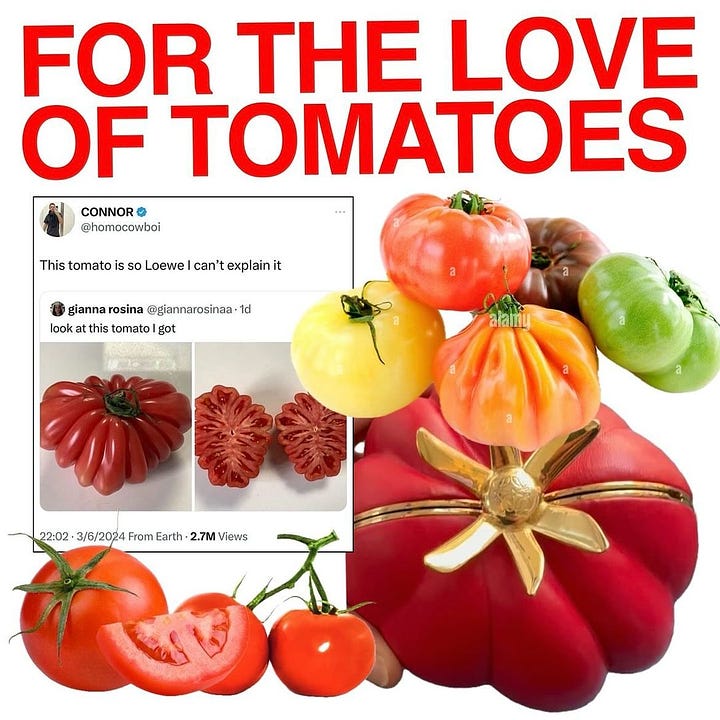
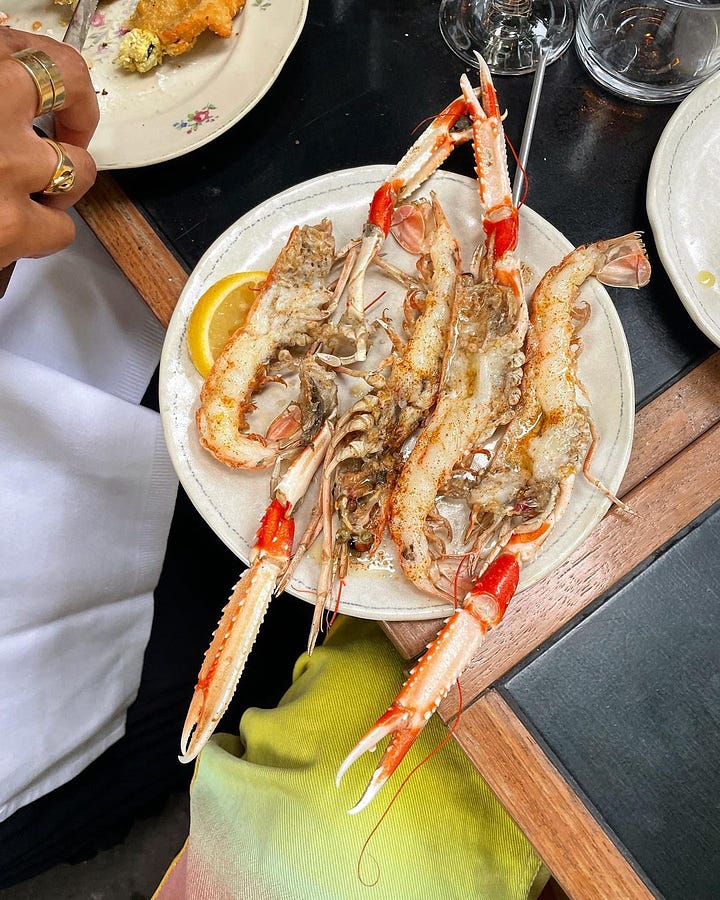
Food as Simple Pleasure
What if simple pleasures were the only thing left in times of crisis? The importance of food in today’s cultural zeitgeist is related to the lipstick effect. Introduced by Leonard Lauder, founder of Estée Lauder, the lipstick effect is an economic phenomenon where, in times of crisis or recession, consumers continue to buy affordable luxury products, such as cosmetics (especially lipsticks), rather than more expensive items.
“Dopamine consumption and the indulgence value are very much alive in crisis times: studies reveal a significant rise in consumption during periods following natural disasters, economic turmoil, and even massive terrorist attacks.” — Elodie Marteau, 2024
“Coming out of the pandemic and into a recession, food has remained a status symbol for some price-sensitive Gen Zs, much like a luxury item or piece of music merch.” — Vogue Business, 2023
In the US, out of 166 Teen Vogue, Glamour, and Allure readers aged 16 to 24-year-old, more than half have bought what they consider to be luxury food or drink in the last year. — Vogue Business, 2023
Amid uncertainty, food provides a delightful escape—a pleasurable rebellion against austerity. In September 2023, iconic brand Burberry joined forces with Norman’s Café, a staple in British culinary culture, during fashion week. Known for adding a twist to classic English breakfasts, Norman’s Café first made a name for itself during the COVID-19 pandemic before officially opening in 2021 at Archway. “One British institution meets another,” commented Jack Moss in Wallpaper. The partnership allowed Burberry to democratise access: it is more affordable to buy a menu from Norman’s than a trench coat. In this regard, Rachel Lee, global insights strategist at The Digital Fairy, reported for Online Appetite: “Food is more accessible! While fashion may seem extravagant and irrelevant (i.e. Kylie Jenner in the lion’s head Schiaparelli), food is the perfect vehicle to make the transition from indulgent to luxurious and affordable.”
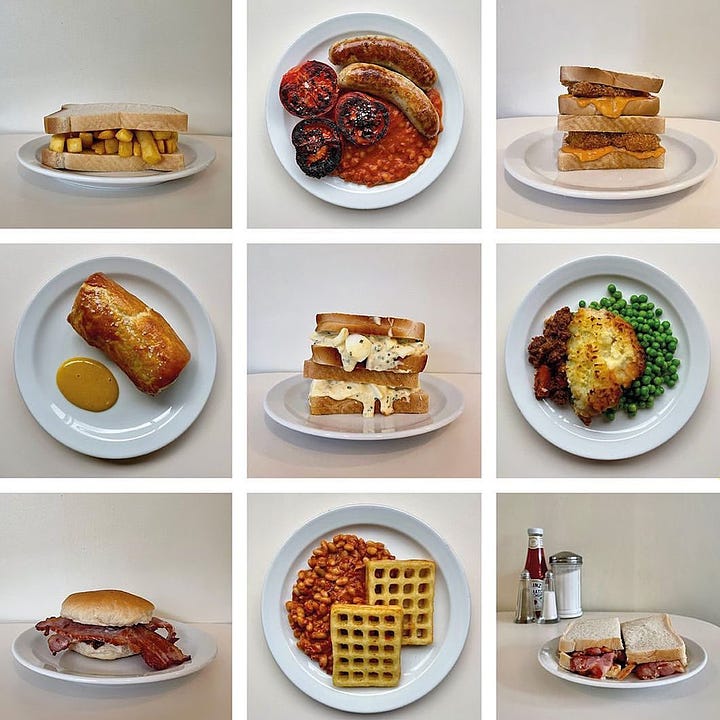
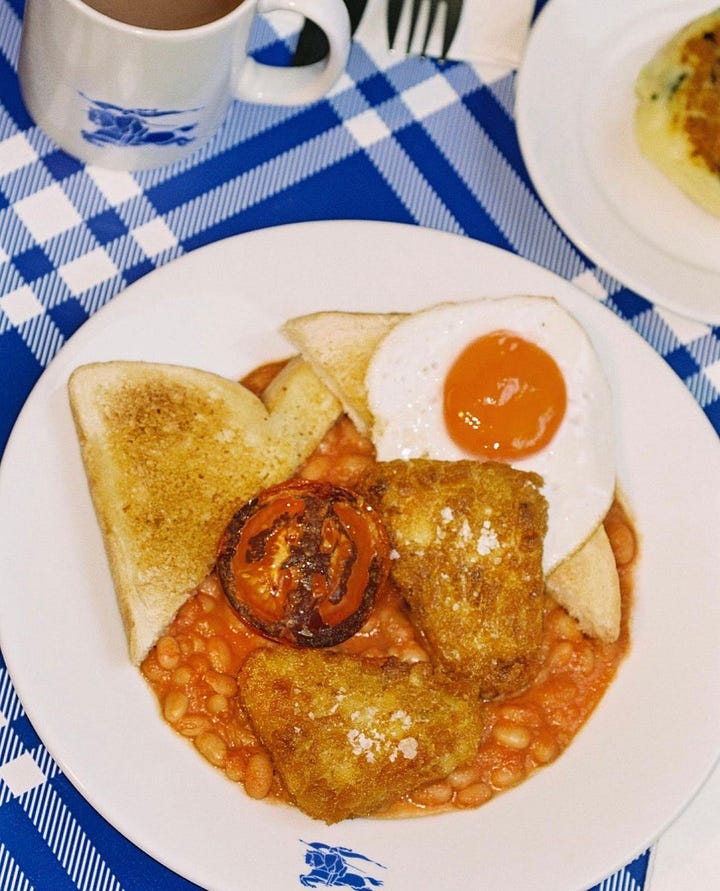
Food as a Catalyst for Commensality
In 2023, the WHO declared loneliness a global public health concern. Frequently named “the loneliness epidemic,” this phenomenon of global isolation among all age groups, including the least vulnerable ones, is growing: 73% of Gen Z reports feeling alone sometimes or always (CNBC, 2020). Social media often gets blamed, but brands have pivoted, playing into this aching need for connection.
Kids are lonely and yearning for something sweet, away from the pervasive screens, to indulge at a time when everything seems to be collapsing around them. Enter Bumble’s Le Café Bumble, a pop-up with the Spanish coffee crew GoodNews, launched during the Paris Olympics. Complete with limited edition pastries from Copains bakery, the initiative pushed Bumble into physical spaces, tapping into food’s indulging and connective power.
This surge in branded coffee and food pop-ups is nothing new—and we are already familiar with the almost-weekly announcements of those openings. But out of this glut emerges a new wave of culinary creative studios: La Table Verte, We Are Ona, Caro Diario, each crafting branded food experiences around the art of dining and hosting.
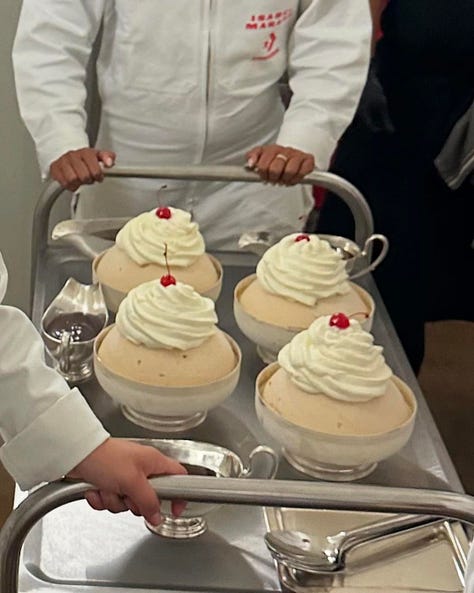
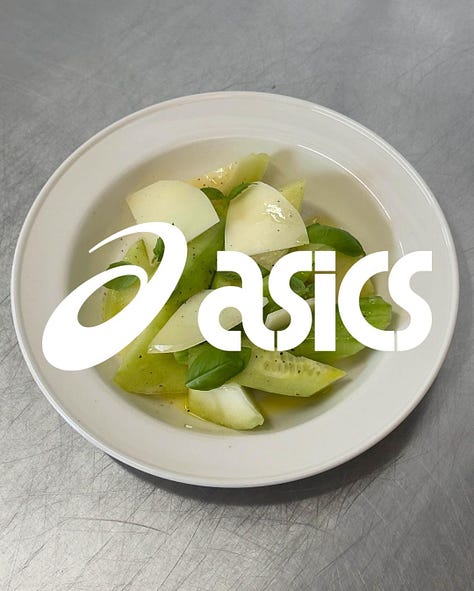
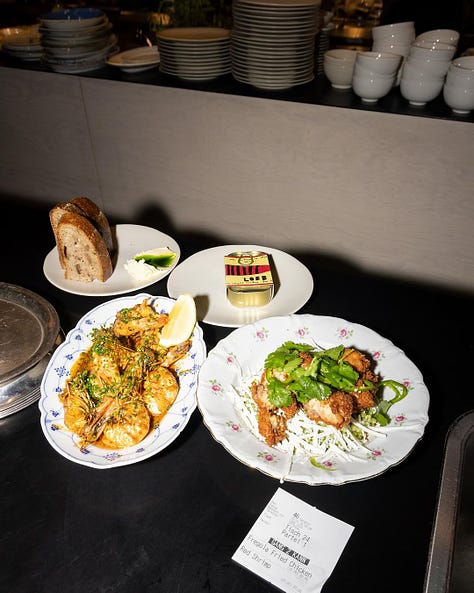
“Eating together is one of the most commonly shared practices among human beings, both across space and time. The remains of food around traces of fireplaces, the oldest fireplaces discovered as far back as about 800,000 years ago, reveal for how long we can confidently say that human beings have been sharing food […] In social sciences and humanities, commensality is commonly used as a scientific concept for eating together […] Does it mean sharing the food? The table? The place? The moment?” — National Library of Medicine, 2021
We eat with friends, family, colleagues, and if we’re eating while watching YouTube, are we really eating alone? Eating around a table, with loved ones, or even strangers seems to be the chosen anti-loneliness solution. The popularity of supper clubs attests to this. First located in the United States, supper clubs are now halfway between a cool event, a pop-up, and a restaurant.
“There’s also been a rise in supper clubs! The idea of people coming together and eating communally, purchasing a ticket for an experience that we as consumers may not get if we were to visit our favourite neighbourhood restaurant —there has been a massive spike in these kind of events and I only see them evolving.” — Ramnique Thiara, PR officer and founder of Little & Local
At the Bottom of Maslow’s Pyramid?
Did we lie when we titled this piece “At the Bottom of Maslow’s Pyramid”? Our exploration of food reveals a truth that Maslow himself might not have anticipated: food doesn’t just sit at the base, satiating our most primal needs—it ascends, layer by layer, to touch every rung of his pyramid. Beyond quelling hunger and offering security, food embodies Love & Belonging through its communal roots, elevating into moments of connection and commensality. It taps into Self-Esteem and Self-Actualization too, becoming a canvas for self-expression in an era where curating “good taste” is as crucial as experiencing taste itself. Whether it's the carefully plated dish on Instagram or the comforting bite shared at a supper club, food is not just sustenance—it's a cultural flex, a source of indulgence and solace in times of crisis, and, ultimately, a declaration of who we are. At every level, we’re consuming more than just calories; we’re devouring meaning.




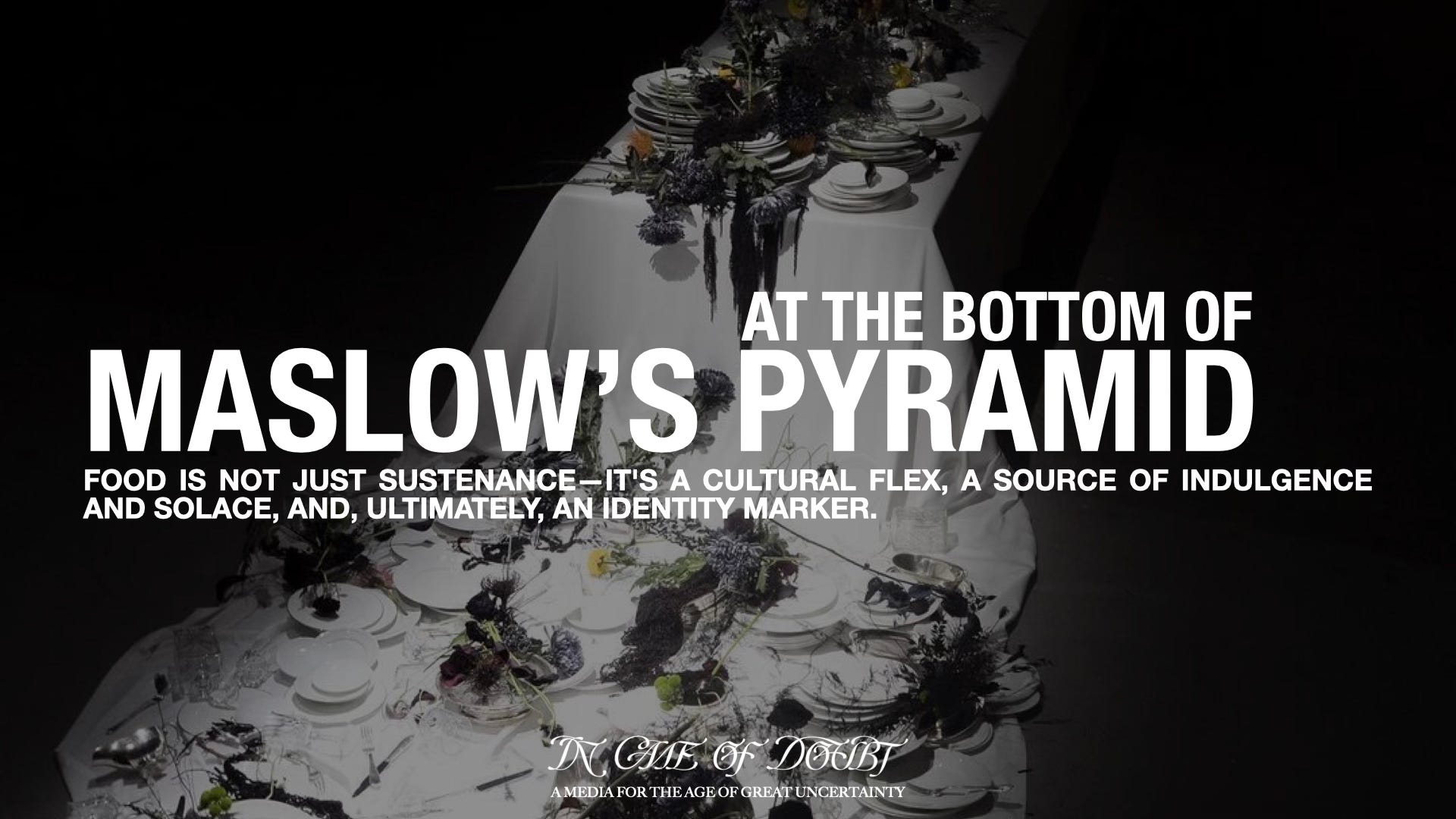
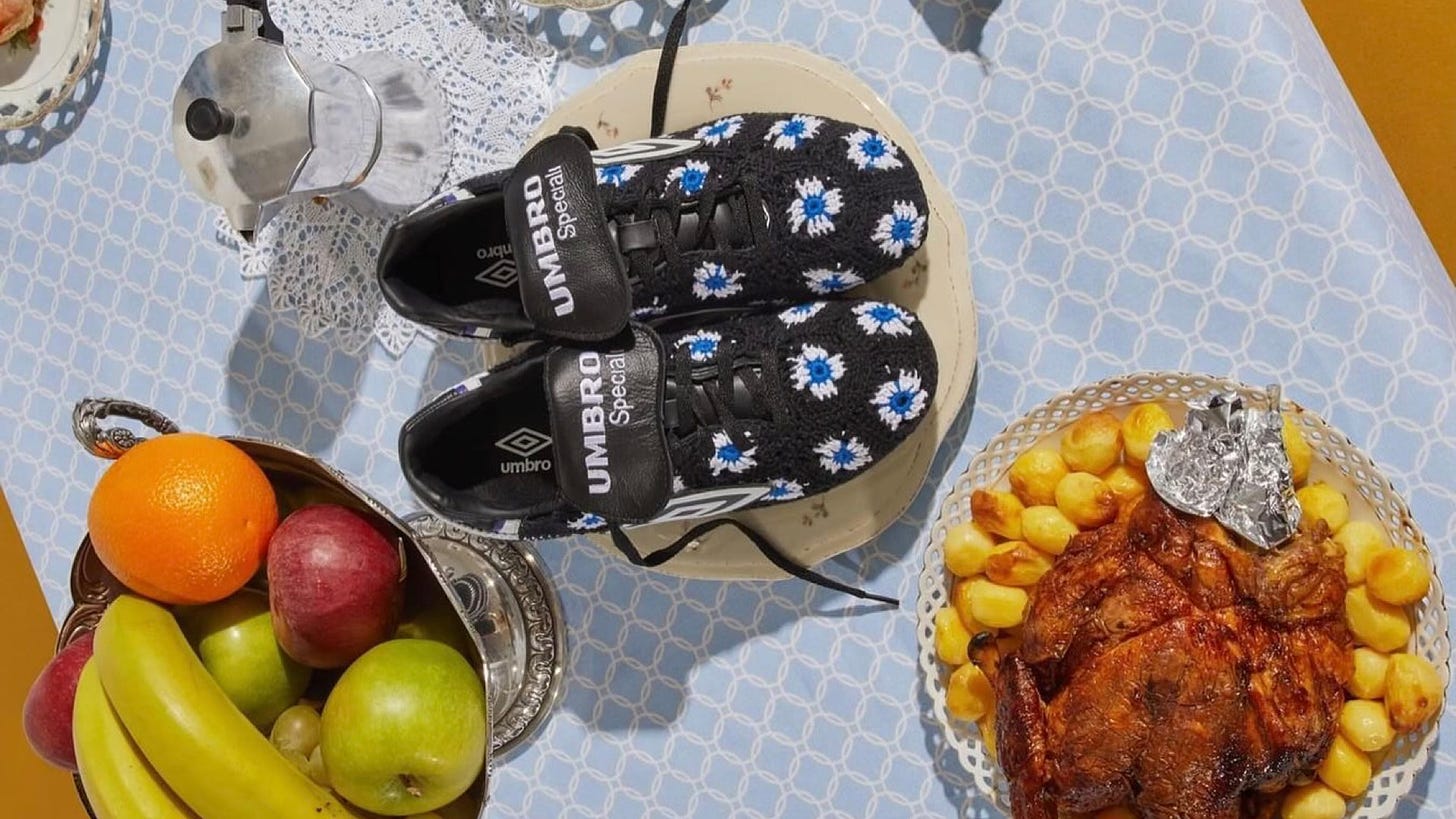

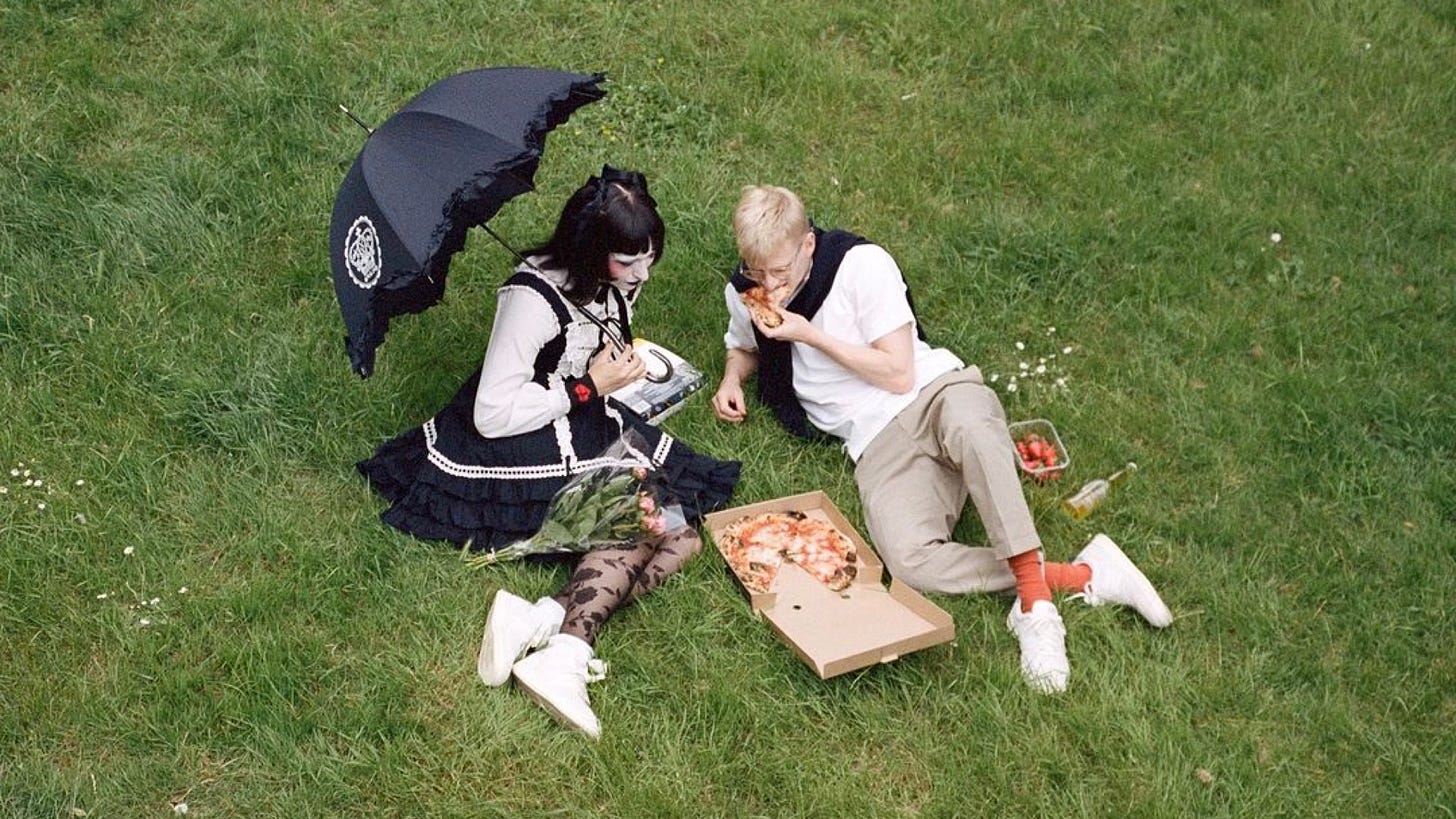

Enjoyed this!! I recently read and have been thinking about this relevant John Berger essay, "The Eaters and the Eaten", if you haven't seen it before: https://www.are.na/block/10127114
Love it!